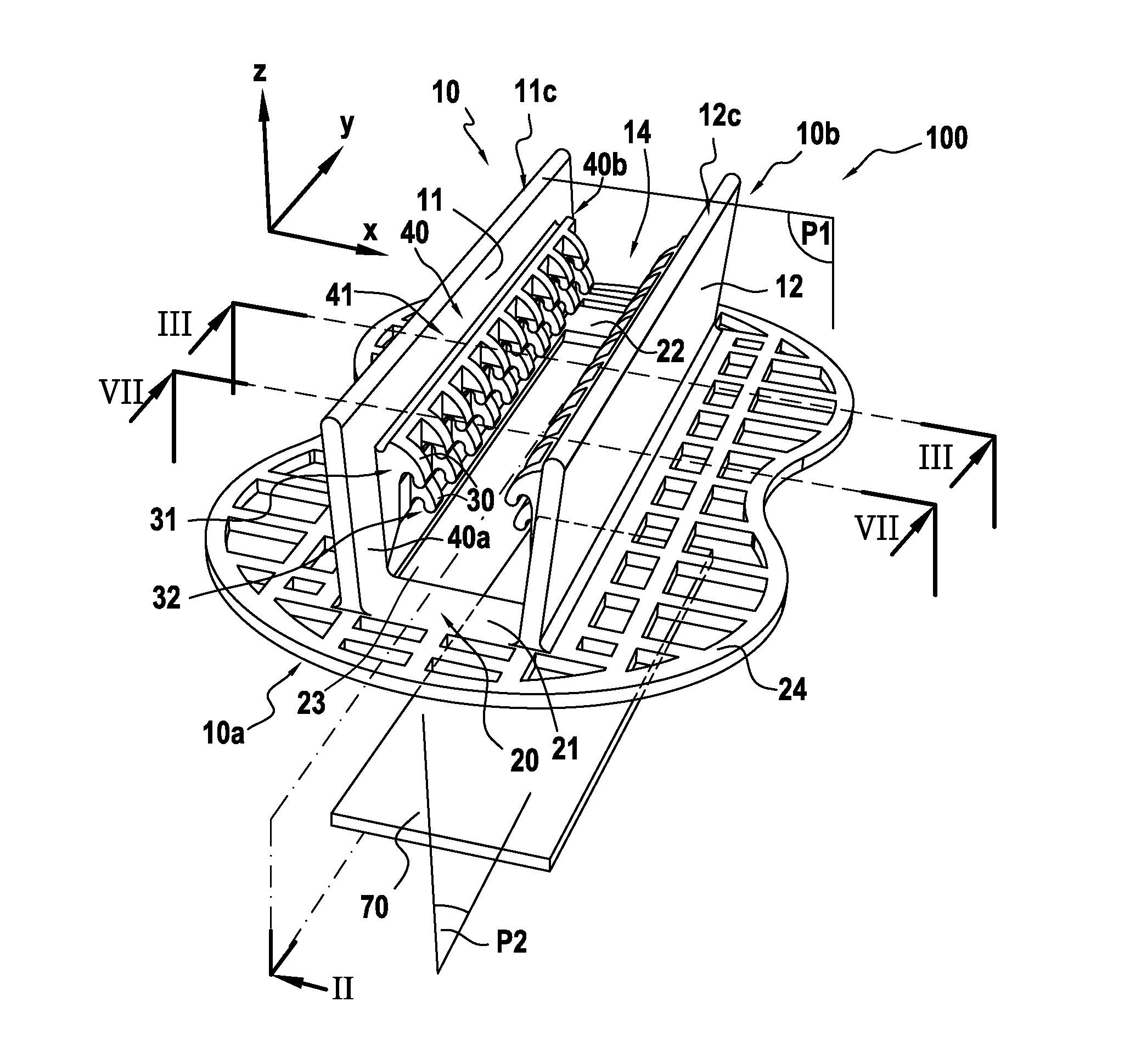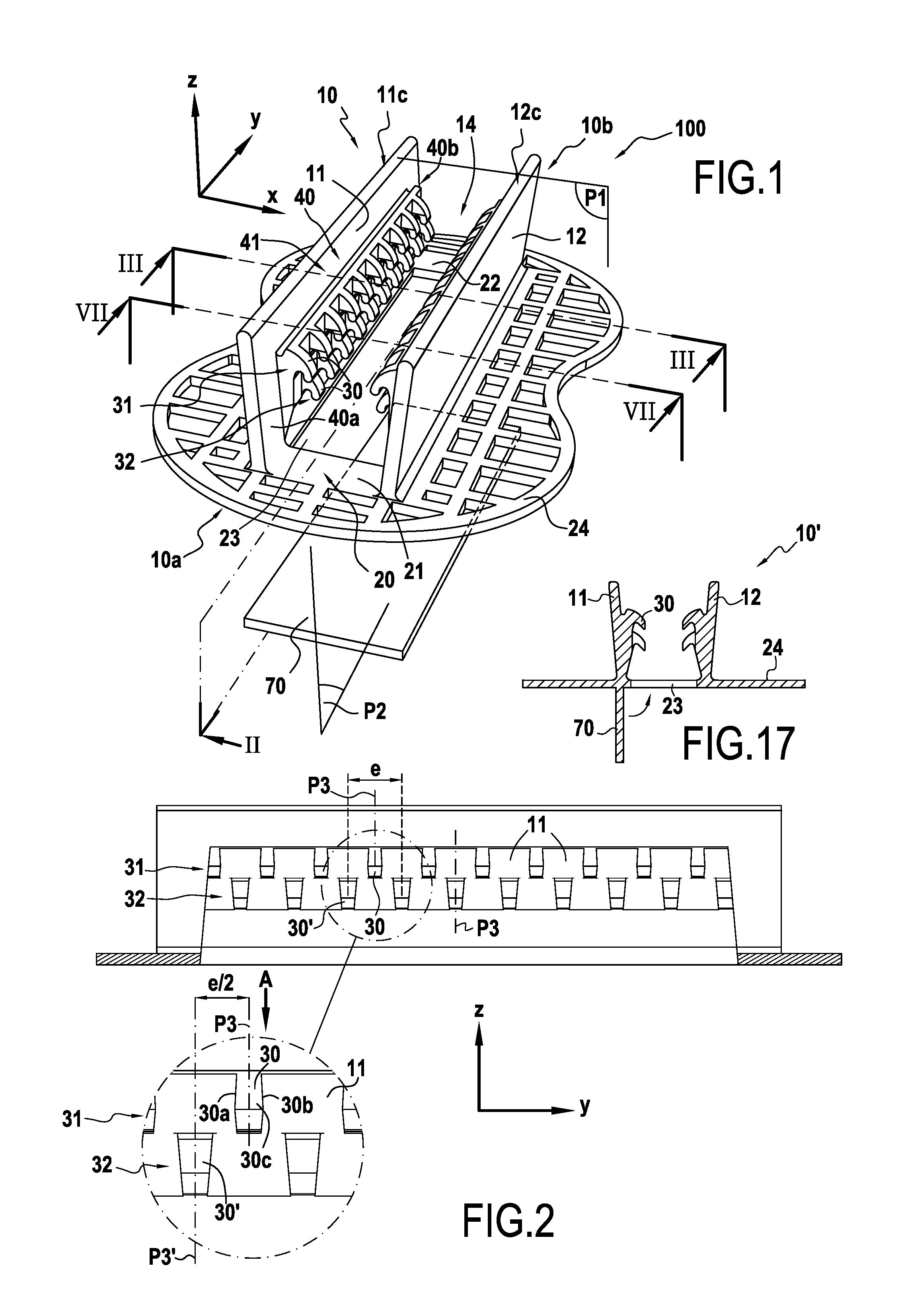Retaining device having hooks
a technology of retaining device and hook, which is applied in the direction of snap fasteners, buckles, transportation and packaging, etc., can solve the problems of insufficient reliability of the wire fastening obtained by the use of abutment or clip fastening system, inability to undo the fastening without damaging the cover, and insufficient self-gripping fastening obtained between the cover fabric and the hooks situated in the bottom of the retaining elemen
- Summary
- Abstract
- Description
- Claims
- Application Information
AI Technical Summary
Benefits of technology
Problems solved by technology
Method used
Image
Examples
first embodiment
[0088]A retaining device 100 in a first embodiment is shown in particular in FIG. 1. Such a device is adapted to be placed in a mold used for making an article by molding, the molding material constituting the article possibly being a foam in particular, e.g. a thermoplastic or cured foam. The retaining device is thus overmolded by the article, once it has been molded. Advantageously, it then defines a bottom portion of a reception groove formed at the periphery of the article.
[0089]In the embodiment described below, the article having the retaining device 100 fastened thereto is a seat pad for a motor vehicle, which pad is made by molding.
[0090]Nevertheless, this example is not limiting. The article to which the retaining device 100 is fastened may be any other article, possibly not even molded, that needs to be associated with a cover. It is also possible to envisage fastening the retaining device of the invention in a manner other than by overmolding, e.g. by adhesive, welding, m...
fifth embodiment
[0128]In a fifth embodiment shown in FIG. 17, the bottom element 70 may also be made integrally with the retaining element 10′ while molding said element 10′. Under such circumstances, the bottom element 70 is a foldable portion, generally secured to the base 20 and adapted to be folded between an initial position in which it does not close the opening 23 in the base 20 and a position in which it covers the opening 23.
[0129]In order to protect the hooks while molding the vehicle seat pad, thereby preserving their gripping properties, the retaining device may also include a pedestal 80 of the type shown in FIG. 5.
[0130]The pedestal 80 is adapted to co-operate with the retaining element 10 and possibly with the bottom element 70 during molding of the pad 101. As shown in FIG. 5, the pedestal 80 presents the form of a low wall having its top 83 pointing towards the base 20 of the retaining element 10 when the retaining device 100 is in its mounted position.
[0131]In order to enable the ...
PUM
| Property | Measurement | Unit |
|---|---|---|
| width | aaaaa | aaaaa |
| width | aaaaa | aaaaa |
| depth | aaaaa | aaaaa |
Abstract
Description
Claims
Application Information
 Login to View More
Login to View More - R&D
- Intellectual Property
- Life Sciences
- Materials
- Tech Scout
- Unparalleled Data Quality
- Higher Quality Content
- 60% Fewer Hallucinations
Browse by: Latest US Patents, China's latest patents, Technical Efficacy Thesaurus, Application Domain, Technology Topic, Popular Technical Reports.
© 2025 PatSnap. All rights reserved.Legal|Privacy policy|Modern Slavery Act Transparency Statement|Sitemap|About US| Contact US: help@patsnap.com



